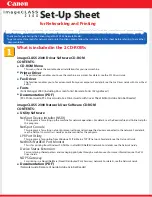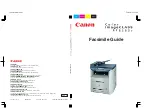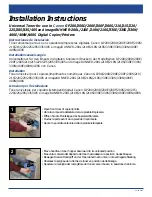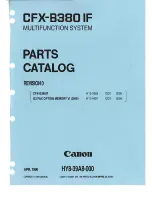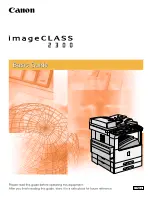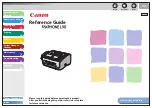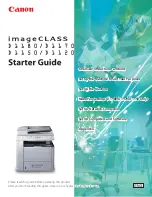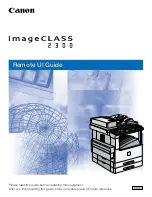
Encryption and Digital Signature Overview
349
E
n
cr
y
p
tion a
nd Digit
a
l S
igna
tur
e Se
tt
ings
13
Encryption Features for Communication
The data sent between the machine and computers on a network can be encrypted.
Encrypting HTTP Communications from a Client to the Machine
(SSL/TLS Server)
The SOAP, Internet Services (HTTP), IPP, and WebDAV ports use the HTTP server of
the machine.
The SSL/TLS protocol is used to encrypt the HTTP communications between a client
and the machine.
To encrypt communications, either one of the device certificate is required: a self-
signed certificate or a certificate issued by another CA.
Note
•
By encrypting HTTP communications, communications data can be encrypted at the time of
printing using IPP (SSL encrypted communications).
Encrypting HTTP Communications from the Machine to a Remote Server
(SSL/TLS Client)
The SSL/TLS protocol is used to encrypt the HTTP communications between a remote
server and the machine.
No certificate is required in general. However, if a remote server is set to require an SSL
client certificate, you can use a certificate issued by another CA.
When verification of server certificates is enabled to verify the SSL/TLS certificate of a
remote server, import a certificate issued by another CA using CentreWare Internet
Services to the machine.
Encryption using IPSec
IPSec enables IP-level (not application-level) encrypted communications with remote
devices.
If you select [Authenticate by Digital Signature] for [IKE Authentication Method], a
certificate issued by another CA is required.
If you select [Authenticate by Preshared Key], no device certificate is required.
Note
•
If the certificate for IPSec contains the V3 extension (keyUsage), "digitalSignature" bit must
be asserted.
For information on IKE authentication methods, refer to "IKE Authentication Method" (P.182).
To verify the certificate of the remote device, you must register a root certificate created
by a CA of the remote device on the machine.
Note
•
To use certificates that have already been created, import them with CentreWare Internet
Services.
E-mail Encryption/Digital Signature
S/MIME is used for E-mail Encryption/Digital Signature. To use S/MIME on the
machine, S/MIME certificates are used.
For an S/MIME certificate, you can use a certificate issued by another CA.
The personal certificates or the device certificates of destinations are required for
encrypted communications.
Note
•
If the certificate for S/MIME contains an "email Address" or a V3 extension (keyUsage),
"digitalSignature" and "keyEncipherment" must be asserted. If the certificate contains v3
extension (extendedKeyUsage), "emailProtection" must be set.
Summary of Contents for apeosport-IV 6080
Page 1: ...ApeosPort IV 7080 ApeosPort IV 6080 DocuCentre IV 7080 DocuCentre IV 6080...
Page 14: ...14...
Page 102: ...4 Machine Status 102 Machine Status 4...
Page 266: ...5 Tools 266 Tools 5...
Page 294: ...7 Printer Environment Settings 294 Printer Environment Settings 7...
Page 326: ...9 Scanner Environment Settings 326 Scanner Environment Settings 9...
Page 334: ...10 Using IP Fax SIP 334 Using IP Fax SIP 10...
Page 346: ...12 Using the Server Fax Service 346 Using the Server Fax Service 12...
Page 364: ...13 Encryption and Digital Signature Settings 364 Encryption and Digital Signature Settings 13...
Page 402: ...14 Authentication and Accounting Features 402 Authentication and Accounting Features 14...
































